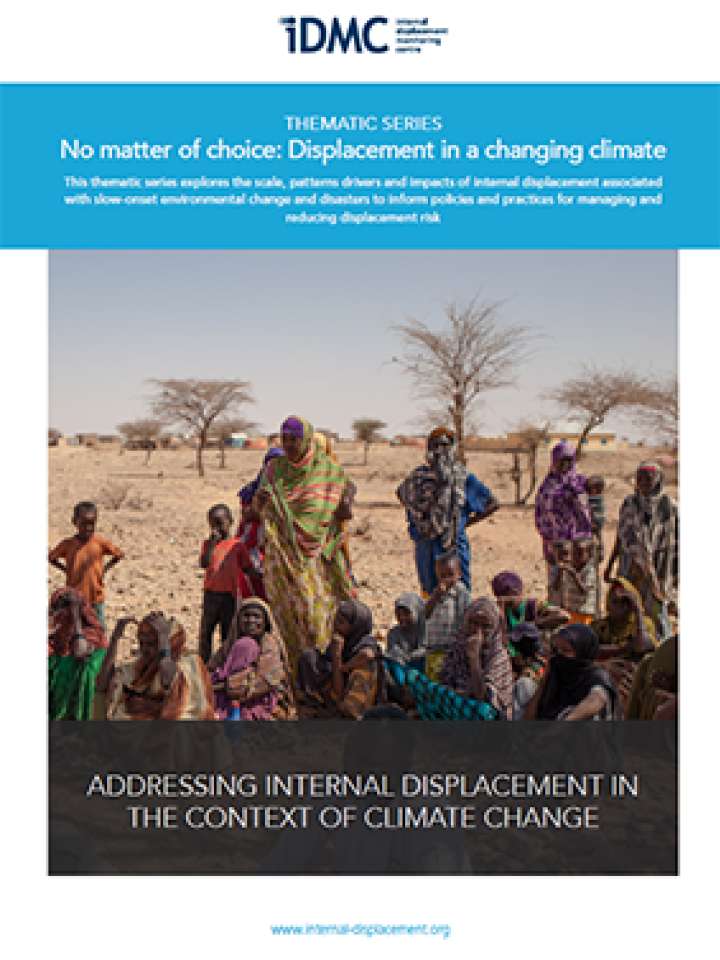Addressing internal displacement in the context of climate change
This report introduces an analytical framework to better understand the drivers, triggers and impacts of internal displacement in the context of climate change. The slow onset effects of climate change, such as desertification, glacial retreat, increasing temperatures, land and forest degradation, loss of biodiversity, ocean acidification, salinization and sea level rise are increasing. Under certain circumstances, these effects can lead to displacement, but the scale of this phenomenon is unknown.
Internal displacement in the context of climate change is particularly challenging to identify and monitor. But evidence is beginning to emerge from an increasing number of cases around the world that both confirm that displacement is rising and that point to ways to address it. A first step in addressing internal displacement in the context of climate change is to better understand its drivers, triggers and impacts. With this in mind, IDMC has been developing a typology of such displacement events, a framework that enables their in-depth analysis as well as the identification of options to prevent and respond in a more systematic manner. This report is an introduction to this framework.
Expanding the availability of information and analysis on displacement linked with climate anomalies and slow-onset disasters can help assess the scale of the issue and the resources needed to address it. Identifying solutions that have been successfully applied in different regions of the world may provide examples that can be adapted to similar displacement cases. Such a framework may also help identify conditions that put a population at risk of future displacement and support better planning for prevention in the short and longer term. Ultimately, this typology is intended to inform interventions and policy making at the local, national, regional and global levels, building on a growing collection of displacement data and analysis of successful practices in different contexts.
Explore further
